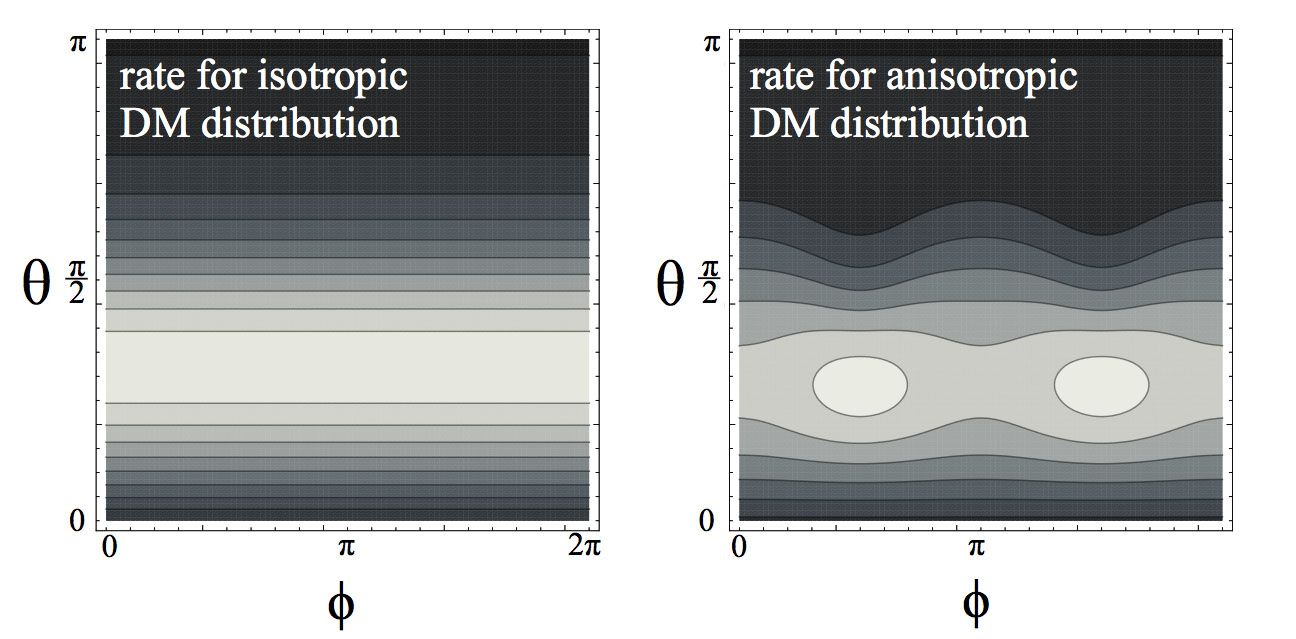There is a large ongoing effort to search for dark matter directly. If we are lucky we should soon observe dark matter particles in the Milky Way halo scattering off of atomic nuclei. The next step will be to study those events carefully and try to learn as much as possible from the dark matter properties and its distribution in the halo. One promising way of understanding the halo properties through direct detection will be to measure the direction of the nuclear recoils. Since that will be correlated with the incoming flux of dark matter particles, we will be able to detect anisotropies in the dark matter velocity distribution and shed light in the formation history of the Milky Way. The figure above shows how the direction of the nuclear recoils (parameterized by two angles) differ between isotropic and anisotropic halos. For the isotropic case, the directional rate is only sensitive to the motion of the Earth through the Milky Way. But in the presence of anisotropies in the dark matter distribution, the rate develops more interesting patterns, such as hot spots. Studying those patterns will enable us to reconstruct the underlying dark matter distribution in the Solar neighborhood and help us understand the dynamics of the Milky Way Halo.
– Daniele Spier Moreira Alves










